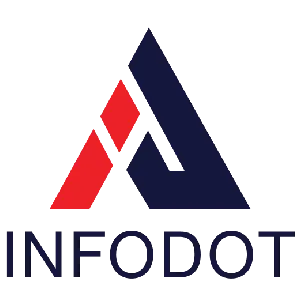Introduction
In the fast-paced world of startups, agility and growth go hand in hand. However, with every new hire or exit, startups often overlook the backbone of business continuity—effective IT asset management. Whether you’re hiring remotely, scaling fast, or operating across multiple locations, a poor onboarding or exit process can lead to serious gaps in IT asset inventory, data loss, or even security breaches.
A well-structured employee lifecycle process doesn’t just begin and end with HR. IT teams play a crucial role, from provisioning laptops to revoking access rights. When aligned with an organized IT asset inventory, startups gain visibility, security, and control—essentials for operational maturity. Streamlining this process is no longer optional; it’s a fundamental requirement for scaling responsibly and securely.
This article offers a step-by-step approach tailored for startup and IT leaders to optimize the employee onboarding and exit experience while tightening asset controls. We dive into best practices, real-world use cases, and tools that ensure your IT doesn’t spiral into chaos. Whether you’re onboarding your 10th or 100th employee, these insights will help you stay ahead, secure, and compliant.
Best Practices for Asset Inventory
An accurate, real-time IT asset inventory is the foundation of IT efficiency and security. Without a solid process, devices go untracked, software licenses remain underutilized, and replacements become a guessing game.
- Automate inventory tracking for accuracy and speed
- Tag all assets with serial numbers and user assignment
- Sync inventory with onboarding/offboarding workflows
- Maintain records of device usage and repair history
- Set alerts for license expiries and warranty renewals
- Conduct quarterly audits for compliance and validation
- Separate personal and company-owned devices clearly
- Integrate inventory tools with HR and MDM systems
Elements of Asset Inventory
Understanding what to track is the first step. An effective inventory spans more than just laptops—it includes hardware, software, subscriptions, peripherals, and even cloud licenses.
- Hardware: laptops, phones, monitors, printers, etc.
- Software: OS, licensed tools, productivity apps, etc.
- Accessories: dongles, chargers, headphones, keyboards
- Cloud licenses: Office 365, Zoom, Zoho, CRMs
- Network devices: routers, switches, access points
- Security assets: VPN tokens, password managers
- Support tools: remote access, monitoring agents
- Ownership details: who is assigned what, and when
How to Streamline Your Asset Inventory?
To scale, you need a centralized system that works in sync with people, process, and technology. Avoid spreadsheets and opt for integrated platforms that align with workflows.
- Choose a centralized asset management tool
- Use automation for assignment and tracking
- Standardize device procurement and de-provisioning
- Train teams to update asset logs in real time
- Map assets to user lifecycle (joiner/mover/leaver)
- Enable IT alerts for anomalies or duplicate usage
- Audit trail for device transfers and ownership changes
- Sync asset status with service desk for transparency
How to Maintain a Robust Asset Inventory?
Sustainability in asset management depends on routine checks, automation, and role-based visibility. Ensure there is clear ownership and accountability for device health and lifecycle.
- Implement automated asset discovery tools
- Align IT asset inventory with ITIL/ISO standards
- Track depreciation for financial and operational insights
- Leverage mobile apps for real-time updates
- Schedule quarterly audits and random spot checks
- Create SOPs for lost/stolen/damaged assets
- Align with finance and HR for budget planning
- Use dashboards for CxO visibility
How a Detailed Employment Checklist Looks Like?
An effective checklist ensures no asset or system access goes unnoticed during employee IT onboarding or exit. It also helps maintain compliance and readiness during audits.
- Pre-onboarding: assign devices, provision software
- Onboarding: set up email, VPN, security training
- During employment: performance monitoring, issue tracking
- Exit planning: notify IT, begin revocation process
- Exit day: retrieve devices, revoke accesses
- Post-exit: wipe device, reassign or store securely
- Documentation: sign-off on asset return
- Compliance: maintain exit asset audit trail
How to Onboard Employees
Onboarding isn’t just an HR function—it’s a coordinated effort between IT, HR, and operations to deliver a smooth, secure, and delightful experience to new joiners.
- Automate account creation and app provisioning
- Ship pre-configured devices for remote hires
- Enable secure login with 2FA or SSO
- Assign dedicated IT support for day 1
- Provide self-service knowledge base and FAQs
- Track delivery and asset acceptance
- Train new hires on IT policies
- Ensure inventory system logs new assignments
How to Exit Employees
Exits need to be fast, secure, and transparent. Poor exit practices can lead to data leaks, reputation risks, and orphaned IT assets.
- Initiate exit workflow 5–7 days before last day
- Disable user accounts, VPN, and email access
- Trigger asset retrieval or courier pickup
- Wipe data remotely before reallocation
- Collect all peripherals and login credentials
- Run a device health check before reuse
- Log return in IT asset inventory system
- Share exit summary report with HR and legal
Develop Clear Checklists for Onboarding/Exit Activities
Using structured checklists reduces friction and ensures consistency across teams, departments, and roles.
- Define device provisioning per job function
- Map app access to user roles
- Enable version control for checklists
- Maintain templates in onboarding platform
- Conduct onboarding and exit audits
- Involve legal and compliance for sensitive roles
- Schedule monthly reviews of checklists
- Collect user feedback post-onboarding/offboarding
What Is the Duration of Employee Onboarding?
Most startups aim for quick onboarding, but meaningful integration takes weeks. A structured 30-60-90 day plan helps build long-term retention and productivity.
- 0–7 days: Access provisioning and basic IT training
- 8–30 days: Process walkthroughs, security drills
- 31–60 days: App usage training and feedback loops
- 61–90 days: Productivity check-ins and optimization
Tips:
- Keep onboarding adaptive to roles
- Offer buddy system or mentor support
- Share KPIs early to build ownership
- Conduct onboarding feedback survey
Employee Onboarding Process Template
This template provides a starting point for startups to create tailored onboarding flows.
- Day 0: IT asset prep and account setup
- Day 1: Welcome email and IT orientation
- Day 2–5: Device troubleshooting support window
- Week 2: Cybersecurity awareness program
- Week 3: Application usage onboarding
- Week 4: Survey and initial productivity report
- Week 6: Review and escalation resolution
- Week 8: Completion sign-off and asset audit
Chatbots: The Latest New-Hire Buddies
AI chatbots have become onboarding companions, offering 24×7 support, resolving FAQs, and accelerating access to knowledge and services.
- Automate common IT support queries
- Guide new hires through system login
- Help reset passwords or retrieve IDs
- Share user guides and manuals
- Provide escalation options for critical issues
- Log IT requests for new users
- Reduce pressure on L1 helpdesk
- Learn and evolve through usage patterns
Best Practices for Employee Onboarding
A consistent and tech-driven onboarding process sets the tone for employee satisfaction and productivity.
- Preconfigure devices with all essential apps
- Sync HR and IT provisioning workflows
- Provide IT welcome kits with FAQs
- Assign accountability across teams
- Centralize communication on progress
- Offer real-time support escalation
- Monitor and report onboarding KPIs
- Learn from feedback and optimize continuously
Best Practices for Employee Exits
Timely and secure offboarding ensures data integrity and organizational security, especially for remote employees.
- Begin process before final working day
- Use MDM tools to revoke access remotely
- Collect all issued devices and credentials
- Ensure proper data backup and archiving
- Wipe device and remove MDM profile
- Capture exit interviews and IT insights
- Close all open IT tickets
- Update the inventory and HR records
Beyond Onboarding: Crossboarding and Offboarding
Crossboarding helps retain talent internally while offboarding safeguards the business. Managing both well enhances brand reputation and operational maturity.
- Use same checklists with role-specific updates
- Review existing assets and reassign if needed
- Adjust access rights and app licenses
- Schedule system trainings for new roles
- Inform HR and IT in advance
- Document transition timeline
- Monitor performance post-transition
- Update policies as roles evolve
How Onboarding Experience and Employee Engagement and Retention Are Closely Related?
Great onboarding boosts productivity by 70% and increases retention by 82%. Employees who feel supported from day one stay longer and perform better.
- Provide a positive IT and HR experience
- Use tools that reduce onboarding friction
- Personalize onboarding flows by role or team
- Encourage open feedback loops
- Monitor satisfaction scores
- Reward departments with high onboarding success
- Align onboarding with company values
- Track retention trends post-onboarding
The Changing Face of Employee Onboarding
Today’s onboarding is digital, data-driven, and experience-focused. From self-serve portals to analytics dashboards, IT plays a central role in shaping this evolution.
- Replace paper forms with smart forms
- Offer remote-ready onboarding kits
- Use analytics to track success
- Deploy learning management systems
- Train IT staff on employee experience
- Automate provisioning and checklists
- Use mobile-first onboarding tools
- Align with DEI and hybrid policies
Why Choose Infodot to Streamline Employee Onboarding/Exit and Asset Inventory?
Infodot specializes in IT lifecycle management, helping startups create frictionless, compliant, and tech-enabled onboarding/offboarding processes. From device provisioning to cloud access audits, we streamline it all.
- Rapid device deployment for remote/hybrid teams
- Automated onboarding and offboarding workflows
- Integrated MDM and inventory dashboards
- Compliance tracking and reporting
- 24×7 helpdesk and chatbot support
- Audit-ready asset audit trail documentation
- Customized checklist templates
- Continuous optimization with feedback loops
Real World Example 1: Scaling Onboarding with Zero Asset Loss
A Bangalore-based SaaS startup scaled from 40 to 120 employees in 10 months. Initially managing devices on spreadsheets, they struggled with missed shipments, duplicate assignments, and unreturned laptops during exits. With Infodot, they implemented a centralized IT asset inventory and automated onboarding workflows. Result: zero asset loss, 3x faster onboarding, and 98% device utilization accuracy.
Real World Example 2: Remote Exit Without Data Leakage
A fintech company faced a critical data breach after a remote employee resigned and retained access to cloud tools. They lacked a centralized system to trigger revocations. Post-engagement with Infodot, they implemented automated offboarding with integrated access control. Exits were completed in under 2 hours with zero unauthorized access incidents.
Conclusion
In today’s distributed, digital-first world, onboarding and offboarding aren’t just operational tasks—they’re risk vectors and culture shapers. Streamlining these processes with a focus on IT asset audit improves security, compliance, and employee satisfaction.
From assigning laptops to revoking SaaS access, every step matters. Startups that delay process maturity expose themselves to legal, operational, and financial risks. Instead, early investment in IT workflows and automation pays off in control, speed, and scalability.
Partnering with an expert like Infodot ensures your startup remains agile without compromising security or efficiency. Let your employee IT onboarding and exits reflect your growth vision—not your operational gaps.
FAQs
Onboarding & Offboarding
- What is the streamlined onboarding process?
A structured onboarding flow includes provisioning, access setup, orientation, and training with clearly defined responsibilities across IT, HR, and managers. - What is the onboarding and exit process?
It’s the lifecycle covering device and account setup during joining and secure deactivation, asset return, and knowledge transfer during employee exit. - What is an onboard employee?
An onboarded employee is someone whose access, equipment, training, and support have been formally provisioned and documented by HR and IT. - What is the meaning of onboarding and offboarding?
Onboarding is the new hire process; offboarding is the structured exit, including device return, access revocation, and knowledge handover. - What is the offboarding process in HR?
It includes notice processing, final settlements, asset retrieval, access deactivation, and feedback capture, often in coordination with IT. - What is the HR onboarding process?
HR onboarding includes paperwork, background checks, policy training, tool provisioning, and coordination with IT for access and assets. - How long should onboarding take?
Typically 30–90 days depending on role complexity. The first week is crucial for setting expectations and enabling productivity. - Why is onboarding important?
It improves employee satisfaction, productivity, and retention by setting expectations and ensuring a smooth integration into systems and culture. - What happens during employee offboarding?
Devices are returned, accounts deactivated, responsibilities transferred, and compliance ensured through exit interviews and checklists. - Who is responsible for onboarding checklist?
Usually shared between HR and IT, ensuring device setup, access control, documentation, and orientation are complete.
IT Asset Inventory & Management
- What is asset inventory management?
It is the process of tracking, updating, and managing all IT equipment, software, and licenses across an organization. - What is included in IT asset inventory?
Devices, software licenses, cloud services, network equipment, ownership records, depreciation value, and warranty/renewal timelines. - How often should asset audits occur?
Quarterly is recommended, with spot checks monthly, especially for high-value or mobile assets. - How to maintain accurate IT asset records?
Use automated asset management tools synced with HR systems and require user acknowledgment during onboarding. - What tools are used for asset inventory?
Common tools include ManageEngine AssetExplorer, JAMF, Microsoft Intune, and Zoho Inventory, often integrated with MDM platforms. - Why is asset inventory important?
It helps track ownership, prevent loss, improve budgeting, ensure compliance, and support onboarding/offboarding workflows efficiently. - What is asset tagging?
It’s assigning a unique label or barcode to each device for tracking, identification, and compliance. - What is the lifecycle of an IT asset?
From procurement, assignment, use, maintenance, to end-of-life (retirement/replacement), with proper documentation throughout. - How to manage remote device handover?
Ship pre-configured devices, use digital acknowledgment forms, and track courier receipts in your asset management system. - Can you automate asset provisioning?
Yes, with MDM and onboarding software that assigns apps, sets permissions, and updates inventory automatically upon user login.
Security & Compliance
- How does asset inventory reduce security risk?
It ensures visibility into all devices, enabling timely patching, access control, and compliance with company and industry policies. - How to revoke access remotely?
Use identity providers like Azure AD, and MDM platforms to disable accounts and wipe data instantly when needed. - What happens to lost or unreturned assets?
They should be flagged in the inventory, and the case should be escalated with documentation and possible financial recovery. - How to ensure compliance during offboarding?
Use checklists that include access revocation, device collection, data sanitization, and signed confirmation from exiting employees. - Can asset management support audits?
Yes, it provides documented history, ownership trails, and configuration states needed during internal or external audits.
Tools, Checklists & Best Practices
- What should an onboarding checklist include?
Devices assigned, software access, security briefing, support contacts, training schedules, and employee acknowledgment. - How to train employees on IT policy?
Include IT orientation on day one, share policy handbooks, and conduct periodic cybersecurity refresher sessions. - What to include in an exit checklist?
List of assigned devices, credential handover, access deactivation, data handover, and exit acknowledgment. - Should remote workers be onboarded differently?
Yes—ensure equipment shipping, video orientation, remote setup support, and digital checklist acknowledgments. - What’s the role of MSPs in onboarding?
They standardize device provisioning, manage access rights, ensure documentation, and offer remote support and MDM services. - How to link asset inventory to HR?
Integrate HRIS with ITAM tools using APIs or third-party connectors for seamless sync of user roles and lifecycle. - How to prevent unauthorized device access?
Use 2FA, encryption, role-based access control, and MDM enforcement for all endpoints. - How to notify IT of a new hire?
Use automated workflows or ticketing systems to alert IT teams for device and access provisioning. - What happens to email after offboarding?
Redirect or archive mailboxes, revoke access, and disable forwarding as per company policy. - Why is offboarding often neglected?
Because it’s reactive. Proactive processes, documentation, and automation are key to making it a secure and standard operation.





